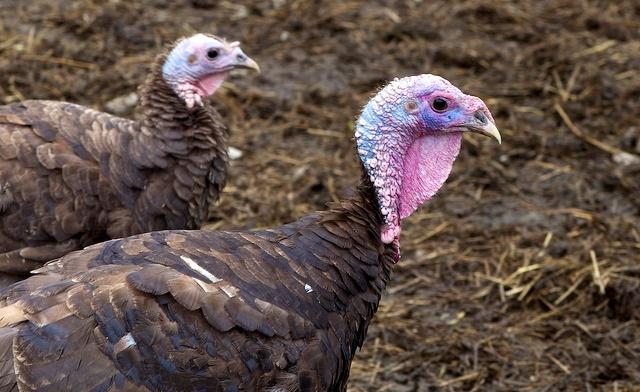Canadian health officials today confirmed highly pathogenic H5N2 avian flu in two of the four H5-related poultry outbreaks in British Columbia's Fraser Valley near Vancouver, one of several evolving stories on avian flu outbreaks around the world.
Harpreet Kochhar, DVM, PhD, Canada's chief veterinary officer, said in a press briefing today that test results on turkeys at a farm in Abbotsford and on chickens at a farm in Chilliwack confirmed highly pathogenic H5N2. Two other farms, also in Abbotsford and Chilliwack, that received chickens from the first Chilliwack farm have birds that tested positive for H5; they await confirmatory testing on the exact strain.
"The Canadian Food Inspection Agency's [CFIA's] testing at the National Centre for Foreign Animal Diseases has confirmed the strain causing the avian influenza outbreak on two farms in the Fraser Valley as a highly pathogenic H5N2 virus," Kochhar said.
Authorities in the Netherlands, meanwhile, have reported a fifth outbreak of H5N8 in domestic birds, while India is combatting a third outbreak of H5N1 in poultry.
Confirmatory tests awaited for 2 farms
"The Province of British Columbia has informed the CFIA that preliminary test results from the two additional farms that were quarantined yesterday are presumptive positive for H5 avian influenza," Kochhar noted. "The CFIA will conduct further confirmatory testing."
The CFIA yesterday placed the third and fourth farms under quarantine and said the agency in the coming days will cull and dispose of all birds on the affected farms. A news release yesterday from the CFIA said it will compensate farmers for lost poultry, paying $20 for a non-breeding chicken, $1,200 for a breeding chicken, $70 for a turkey, and $1,050 for a breeding turkey.
The agency said other compensation might also be available. All farms are within about 5 miles of each other.
Jane Pritchard, DVM, chief veterinary officer with British Columbia's Ministry of Agriculture, said at the press conference that the H5 findings in the additional farms were not surprising. "These results were expected based on the tracing of bird movement from one of the original farms," she said.
"It was great work on the ground that predicted the likelihood that these farms would be positive and led to the precautionary quarantine on farms 3 and 4. Through due diligence we were ahead of the game on this."
She added that officials have not detected other unusual losses of poultry on other Fraser Valley farms or symptoms of avian flu in birds. CFIA and British Columbia authorities are going from farm to farm to monitor for further outbreaks.
Pritchard said the disease is unlikely to go undetected because of its impact on birds. "We think that it's about a 3- to 5-day incubation period. And we also know that if it hits, the [poultry] producer isn't going to miss it."
In a report posted by the World Organization for Animal Health (OIE) yesterday, officials specified that the outbreak at the initially affected farm in Chilliwack was restricted to one of three barns. In the affected barn, all 700 of the 24-week-old chickens died from H5N2.
One adjacent unaffected barn contains 47-week-old chickens, while the other contains 1-week-old pullets. The farm housed 7,000 poultry before the outbreak.
Pritchard said that at the Abbotsford turkey farm, the "vast majority" of 11,000 turkeys in one barn died from H5N2. The remainder in the barn will be culled, as will flocks of about 3,000 and 14,000 in other barns, she added.
Signs of mutation
Canada has experienced low-pathogenic H5N2 outbreaks in British Columbia in 2005 and 2009 and in Manitoba in 2010, but this appears to be the first outbreak of highly pathogenic H5N2 in the country.
In response to a question, Kochhar said the change "is reflective that these viruses are actively mutating." He said the high-path designation means the virus is both highly contagious and produces high mortality in domestic birds.
When asked if the outbreak is showing signs of being contained, Kochhar said it's still in its early stages. Pritchard added, "Our intention is to come out of this quickly and get back to normal as soon as possible."
Fifth Dutch H5N8 outbreak
In the Netherlands, a second outbreak of H5N8 avian flu in Kamperveen, within a kilometer of a previously affected farm, has brought that country's H5N8 outbreak total to five, according to a report filed with the OIE yesterday.
Of 14,600 birds on the farm, 100 contracted the virus, but none fatally. To stamp out the outbreak, however, all poultry on the farm were culled.
The report also confirmed the fourth outbreak, which was reported by the media on Dec 1. It involved 28,000 layer and breeding hens on a farm in Zoeterwoude, in South Holland province, 25 of which became infected. As noted in the media, all chickens on the farm were destroyed.
In response to the recent H5N8 outbreaks in the Netherlands, Germany, and the United Kingdom, the OIE today issued a statement calling for better disease surveillance and control in animals.
"To date, the H5N8 strain has not been linked to any cases in humans," the OIE said. "Nevertheless, it is important to remain on the alert given the capacity of influenza viruses to mutate. With 75% of human emerging diseases being derived from pathogens transmitted by animals, whether domestic or wild, public health protection is inextricably linked to the preservation of animal health.
"The OIE issues a reminder that poor management of disease control at source in animals, irrespective of whether diseases are potentially transmissible to humans, can have consequences that are often severe for the local population and economy, and even at a regional and global level," the agency added.
Third H5N1 outbreak in India
India, meanwhile, has confirmed a third outbreak of H5N1 avian flu in a week, according to another OIE report.
The outbreak, in Alappuzha in Kerala state on the southwestern tip of the country, killed 2,554 ducks in a village flock of 138,063 ducks. An additional 26,746 birds were culled.
The previous outbreaks were in the same region of Kerala. One affected a flock of 228,907 ducks, and the second a flock of 13,000 ducks. All three outbreaks began on Nov 20, with different reporting dates.
See also:
Dec 4 CFIA news release
Dec 3 CFIA news release
Dec 3 OIE report on Canadian outbreaks
Dec 3 OIE report on Dutch H5N8 outbreak
Dec 4 OIE statement on H5N8 and animal surveillance
Dec 3 OIE report on H5N1 outbreak in India




















